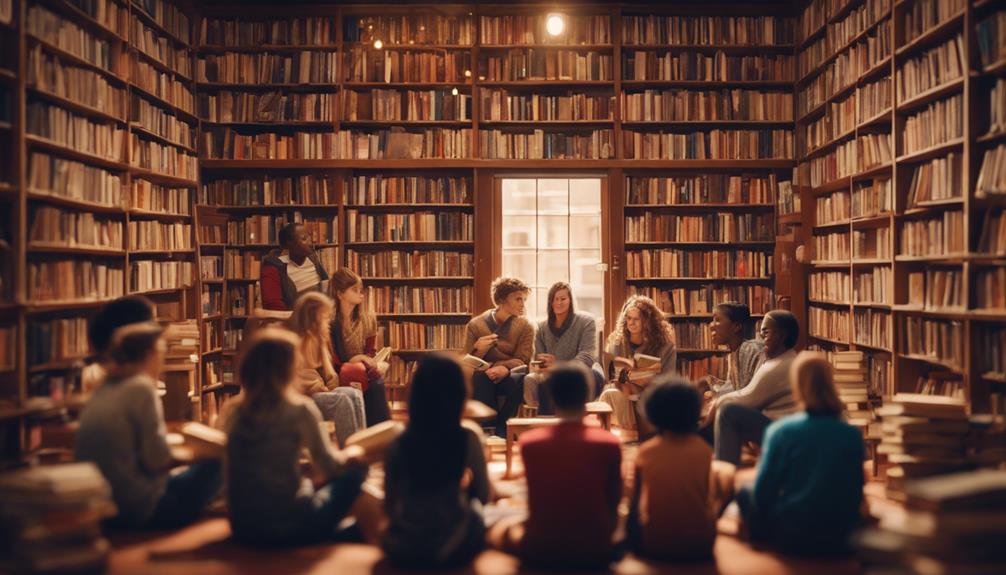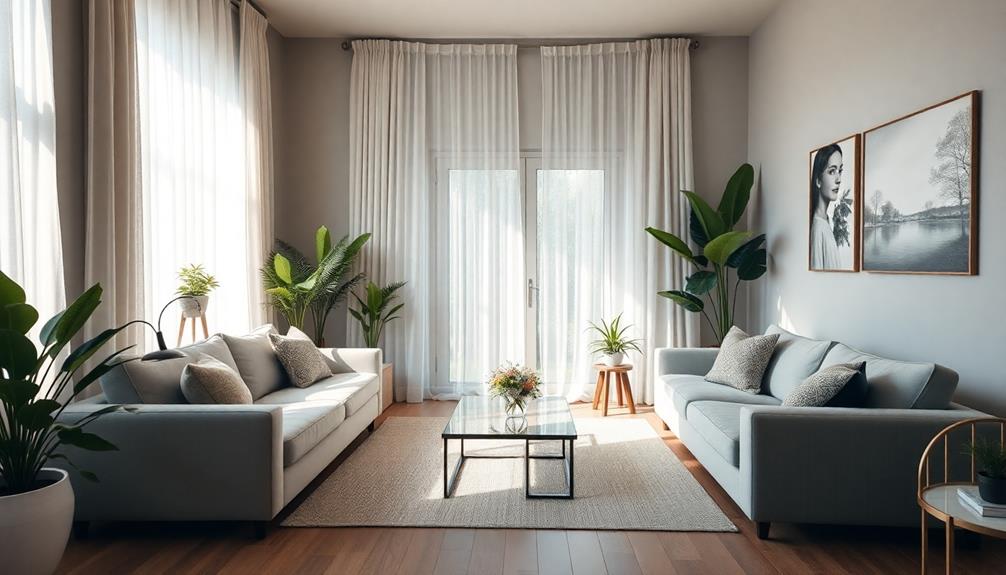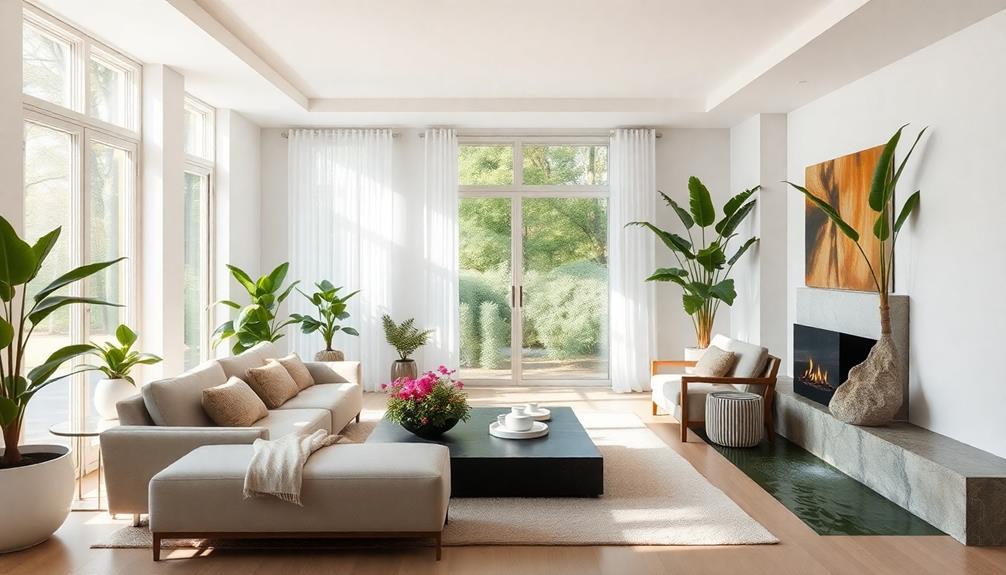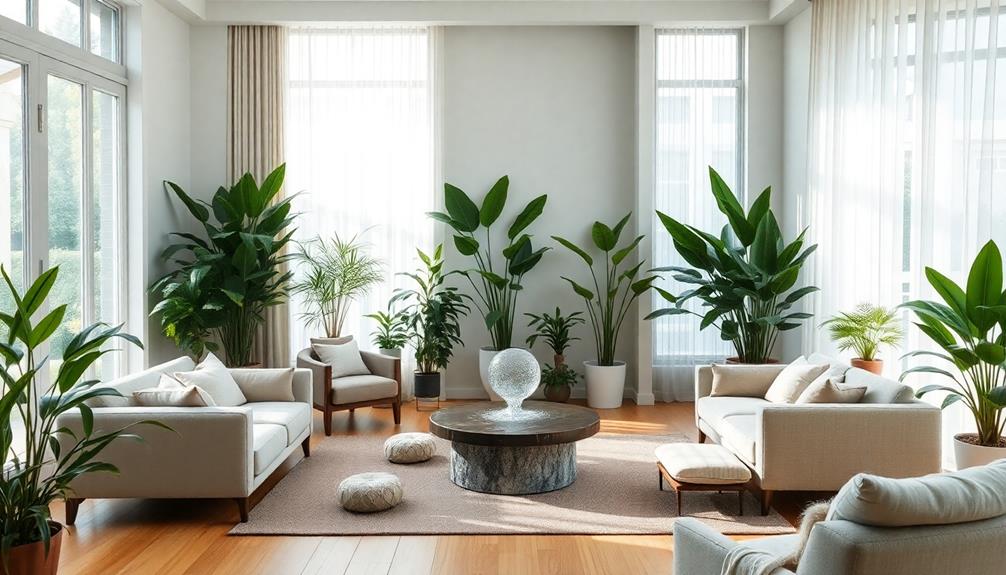Curious about Bogan Prom? It's an Aussie festivity filled with fun, friendship, and unconventional flair. This celebration shakes up the norm, offering a fresh take on Australian culture.
Key Takeaways
- Bogan Prom is an Australian event celebrating bogan culture with unconventional styles and fun.
- It challenges societal norms and offers social commentary through its unique theme.
- Participants embrace classic bogan fashion and laid-back attitudes during the event.
- The tradition involves music, camaraderie, and a carefree spirit among attendees.
- Bogan Prom highlights the positive aspects of bogan lifestyle and community.
The Origins of Bogan Culture
The origins of bogan culture can be traced back to the late 1980s in Australia, where the term 'bogan' emerged to describe residents of working-class suburbs in Sydney and Melbourne, particularly in New South Wales. Initially used as a derogatory term by the more affluent Eastern Sydney residents to label those from the western suburbs, the term quickly gained traction and became a significant part of Australian vernacular. The working-class communities in the western suburbs embraced the term, redefining it to symbolize pride in their identity.
In these Western Sydney and Melbourne neighborhoods, the bogan culture flourished, characterized by anti-authoritarianism, a fondness for classic rock music, and distinct fashion choices such as flannelette shirts and ugg boots. Despite its humble beginnings as a label of disdain, the concept of bogan has transformed over the years to embody a celebration of a rough-around-the-edges identity, culminating in events like National Bogan Day.
Stereotypical Characteristics and Traits

Sporting classic bogan fashion like flannelette shirts and ugg boots, attendees at bogan proms embrace their working-class roots with enthusiasm. The bogan stereotype is often associated with being a blue-collar, unsophisticated person, embodying a laid-back and unpretentious attitude towards life. Embracing the term 'bogan' with pride, individuals attending bogan proms revel in activities that reflect this stereotype, creating a unique and entertaining celebration of their culture.
To further illustrate the stereotypical characteristics and traits of bogan prom attendees, here is a table showcasing common elements found at these events:
| Stereotypical Characteristics | Traits | Attitude | Style |
|---|---|---|---|
| Flannelette shirts | Blue-collar fashion | Laid-back demeanor | Ugg boots |
| Holden car centerpieces | Love for Aussie culture | Unpretentious attitude | Mullet hairstyles |
| Beer bottle vases | Embracing bogan lifestyle | Fun-loving spirit | Classic rock karaoke |
Positive Connotations and Celebrations
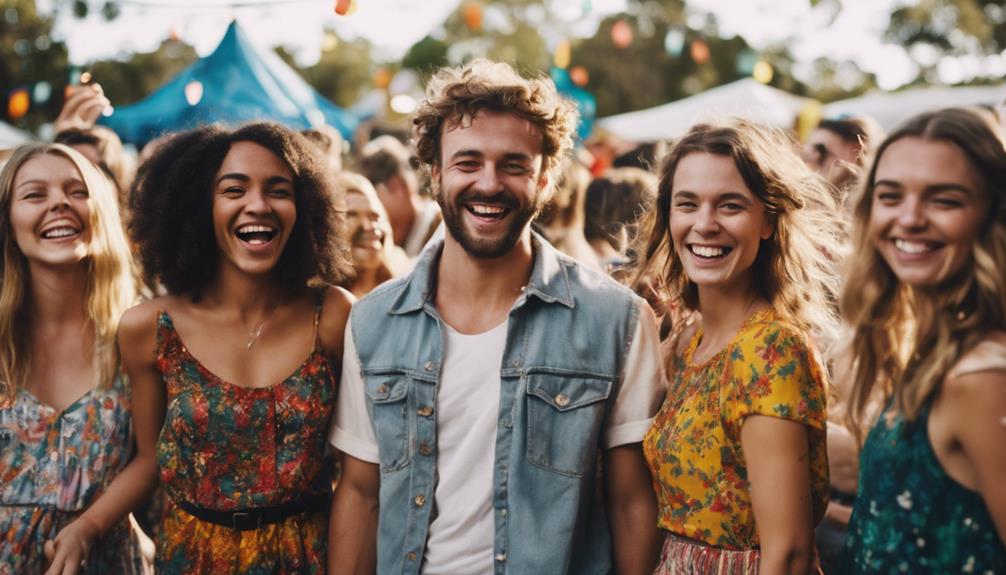
Embracing the bogan lifestyle comes with a sense of community and a carefree spirit that defines the positive connotations and celebrations associated with it.
National Bogan Day encapsulates this by celebrating bogan culture with rock music and embracing a rough-around-the-edges identity. The term 'bogan' itself is sometimes used favorably as a way to proudly identify with authentic Aussie culture.
Even in popular culture, some fictional characters exhibit bogan traits, reflecting a positive portrayal of the culture and its values.
Bogan Prom, a unique celebration of the bogan lifestyle, emphasizes fun, camaraderie, and the embracing of unconventional styles.
Being a bogan isn't just about the outward appearance or stereotypes; it signifies a carefree attitude, a strong sense of community spirit, and a distinct slice of Australian culture that's cherished by many who partake in the festivities.
Media Portrayal and Public Perception

You'll explore how the media depicts bogan prom, uncover public sentiments towards this tradition, and analyze its cultural significance.
Media coverage often highlights the flamboyant outfits and festive spirit of bogan prom, shaping public perceptions in various ways.
Understanding the impact of media representation and public opinions can provide valuable insights into the broader cultural landscape surrounding bogan prom.
Media Representation Analysis
When analyzing media representation of bogans in Australia, it becomes evident that their portrayal often leans towards emphasizing stereotypes of their lifestyle and fashion choices. The media tends to focus on the rough-around-the-edges aspects of bogan culture, sometimes exaggerating characteristics for entertainment value. TV shows and documentaries have used the bogan concept for comedic effect or as a way to provide social commentary on Australian society. This portrayal in the media can have cultural implications, shaping how the broader public perceives the bogan subculture.
To further understand the media representation of bogans, let's look at a comparison in the table below:
| Stereotypical Portrayal | Cultural Commentary |
|---|---|
| Emphasizes fashion choices like flannelette shirts and mullet hairstyles | Explores the socio-economic factors influencing bogan culture |
| Highlights loud behavior and love for V8 cars | Examines the evolving definition of bogan identity |
| Often depicted as unrefined and uncultured | Challenges the stereotypes associated with boganism |
Public Opinion Insights
Amidst media coverage emphasizing the fun and quirky aspects of Bogan Prom, public perception of the event varies greatly. Some individuals see Bogan Prom as a celebration of Aussie culture, embracing the unique blend of humor and tradition it offers.
Others view it as a humorous parody, poking fun at stereotypes associated with the bogan lifestyle. The event's presence in news outlets, documentaries, and social media platforms has played a significant role in shaping its public image.
The iconic Ford Falcon and the symbolic Bogan River add to the event's charm for many, contributing to its appeal and popularity. How Bogan Prom is portrayed in the media can influence how different audiences perceive it, leading to an evolving reputation that continues to spark conversations and interest.
Whether you see it as a lighthearted tradition or a comical spectacle, Bogan Prom remains a topic of fascination and debate within Australian culture.
Cultural Impact Assessment
Examining media portrayals and public perceptions provides valuable insights into the cultural impact of Bogan Prom. The term 'bogan' is often associated with exaggerated stereotypes, and events like Bogan Prom are no exception. Media coverage tends to highlight these caricatures, portraying the West as the epitome of the Bogan subculture.
Public opinion on Bogan Prom varies, with some finding it a humorous and satirical celebration, while others criticize it for perpetuating negative stereotypes. The way Bogan Prom is depicted in the media can significantly influence how it's perceived by the broader public, shaping its cultural impact. Some view Bogan Prom as a playful twist on traditional prom events, blending humor with social commentary.
Ultimately, Bogan Prom challenges societal norms and stereotypes by offering a unique and exaggerated take on bogan culture, inviting people to rethink what they thought they knew exactly about this subculture.
Regional Equivalents and Variations

Across different regions in Australia, variations of the bogan prom, like the Bevan Ball in Queensland, showcase unique twists on the traditional celebration. These events maintain the core elements of dressing up, reveling in bogan culture, and enjoying a good time, but they also incorporate local flavors and customs.
Here are some examples of regional equivalents and variations:
- The Territory Tuxedo in the Northern Territory: This event puts a humorous spin on formal wear, with attendees often sporting colorful Hawaiian shirts paired with dress shorts and thongs.
- The Ute Muster in New South Wales: In this version of the bogan prom, participants showcase their prized utes, engaging in competitions like best ute decoration or loudest exhaust.
- The Flanno Fling in Victoria: Victoria's take on the bogan prom celebrates the iconic flannelette shirt, with attendees embracing the cozy garment as part of their formal attire.
- The Bundy Ball in Queensland: Named after the popular Aussie drink Bundaberg Rum, this event features themed drinks and activities centered around the beloved beverage, adding a unique touch to the festivities.
Evolution of the Term 'Bogan'

The evolution of the term 'bogan' reflects a shifting cultural landscape in Australia, from its derogatory origins to a multifaceted identity marker.
Originally believed to have roots in Aboriginal languages like Wiradjuri or Ngiyampaa, 'bogan' initially described the birthplace of a notable headman, leading to the naming of the Bogan River in New South Wales.
It later transformed into a derogatory term used by eastern Sydney residents towards those in the western suburbs. Over time, 'bogan' expanded beyond a mere insult to encompass a broader cultural concept.
The term now signifies specific fashion choices such as ugg boots and flannelette shirts, along with preferences for certain types of vehicles. This transformation has sparked conversations about class, stereotypes, and Australian culture, highlighting how 'bogan' has shifted from a negative label to a more nuanced identifier of a particular lifestyle and mindset.
Debunking Common Bogan Stereotypes

Don't overlook the reality: bogans can often surprise you with their positive impact and community involvement. Despite common stereotypes, many bogans are integral members of society who contribute in meaningful ways.
Here are some important points to keep in mind when debunking common bogan stereotypes:
- Bogans aren't always uncultured: While they may have a different way of expressing themselves, bogans can appreciate art, music, and literature in their own unique manner.
- Community service isn't out of reach for bogans: Many actively engage in volunteering and charitable activities, showing a compassionate side often overshadowed by negative perceptions.
- Bogans play a crucial role in local communities: Their support and involvement help maintain the fabric of society, from grassroots events to fundraising initiatives.
- Labeling someone as a bogan can be limiting: It's vital to recognize the individual behind the stereotype and appreciate the diverse contributions they can make.
Implications of Using the Term

Consider how labeling someone as a bogan can shape their self-perception and affect their interactions with others.
Recognize the diverse range of individuals within the bogan community, challenging stereotypes and promoting inclusivity.
Be mindful of the implications of using the term 'bogan', endeavoring to treat everyone with respect and understanding.
Labeling and Perceptions
When categorizing someone as a bogan, understanding the varied implications that come with the term is crucial. Here are some key points to keep in mind:
- Intent Matters: The purpose behind labeling someone as a bogan can greatly influence how it's perceived. Whether it's intended as a joke among friends or as a derogatory remark, the context is significant.
- Self-Identification: Some individuals proudly embrace the bogan label, viewing it as a symbol of a carefree and laid-back lifestyle. For them, being a bogan is a source of pride rather than shame.
- Diversity Within: It's important to acknowledge that the bogan community is diverse, with individuals from various backgrounds and beliefs. Avoid making sweeping generalizations that ignore this diversity.
- Challenge Stereotypes: Reflect on the broader societal implications of using labels and stereotypes. Encourage critical thinking about how these labels can shape perceptions and interactions within communities.
Impact on Individuals
Understanding the impact of using the term 'bogan' on individuals involves considering its varied implications, from derogatory connotations to expressions of camaraderie.
When labeling someone as a bogan, it's pivotal to think about the intent behind it and how it may affect the person being labeled. Some individuals may embrace the term as a badge of honor, while others might feel offended or marginalized by it. Recognizing the diverse nature of the bogan community can help in steering clear of harmful stereotypes and fostering more inclusive interactions.
Reflecting on the use of labels like bogan can also spark important conversations about the broader effects of stereotypes in society. While for some, being identified as a bogan may evoke a sense of belonging and shared identity, for others, it could perpetuate negative assumptions and discrimination.
Being mindful of how the term 'bogan' impacts individuals is fundamental in promoting understanding and respect within the community.
Diversity Within Community
Recognizing the multifaceted nature of the bogan community is essential for promoting inclusivity and avoiding stereotypes. Within this community, individuals come from various backgrounds, hold different occupations, and have a wide range of interests.
To better understand the diversity within the bogan community, consider these points:
- Varied Backgrounds: Bogans can originate from diverse cultural, educational, and socioeconomic backgrounds, highlighting the complexity of their community.
- Differing Occupations: Members of the bogan community may work in a variety of professions, challenging the assumption of a singular type of employment.
- Unique Interests: Their hobbies and passions can vary greatly, showing that bogans have multifaceted personalities beyond common stereotypes.
- Individual Characteristics: Each person labeled as a bogan is unique, with their own story, experiences, and traits that shouldn't be overlooked.
Embracing Bogan Identity
To fully embrace bogan identity is to proudly celebrate Australian working-class culture with a fun and light-hearted attitude. Bogan Prom encourages individuals to dress up in stereotypical bogan fashion, such as flannelette shirts and ugg boots, as a way to embrace this unique cultural identity.
The event typically features activities like rock music, car displays, and themed decorations that further emphasize the bogan lifestyle.
Participating in Bogan Prom not only allows individuals to express their bogan identity but also fosters a sense of community and camaraderie among like-minded individuals. By coming together to celebrate their shared love for Australian working-class culture, attendees of Bogan Prom create a welcoming and inclusive environment where everyone can feel accepted and appreciated for who they are.
Frequently Asked Questions
What Is the Bogan Culture in Australia?
Bogan culture in Australia embodies working-class roots, rebellious spirit, and a penchant for classic rock. Attire like flannelette shirts and ugg boots, association with Holden Commodores, and National Bogan Day celebrations showcase this unique identity.
What Is a Bogen Slang?
A bogan slang term refers to Australian working-class individuals with specific cultural traits and behaviors. They often wear flannelette shirts, drive certain vehicles, and engage in activities like drinking and hooning.
What Is a Bogun?
You're wondering what a 'bogun' is? It's an Aussie term for someone seen as uncultured. Interesting fact: Over 70% of Australians know what a 'bogun' is and its connotations in the country.
Are Kath and Kim Bogan?
Yes, Kath and Kim are quintessentially bogan with their exaggerated traits in fashion, speech, and behavior. Their satirical portrayal in Australian TV showcases iconic bogan characteristics, contributing to their popularity and solidifying their status in pop culture.
Conclusion
Now that you've explored the world of Bogan culture, you've uncovered a unique and vibrant tradition that's often misunderstood.
Like a hidden gem waiting to be discovered, the Bogan identity is full of rich history, pride, and community.
So next time you hear the term, remember the depth and diversity that lies beneath the surface.
Embrace the Bogan spirit and celebrate the colorful tapestry of Australian culture!

